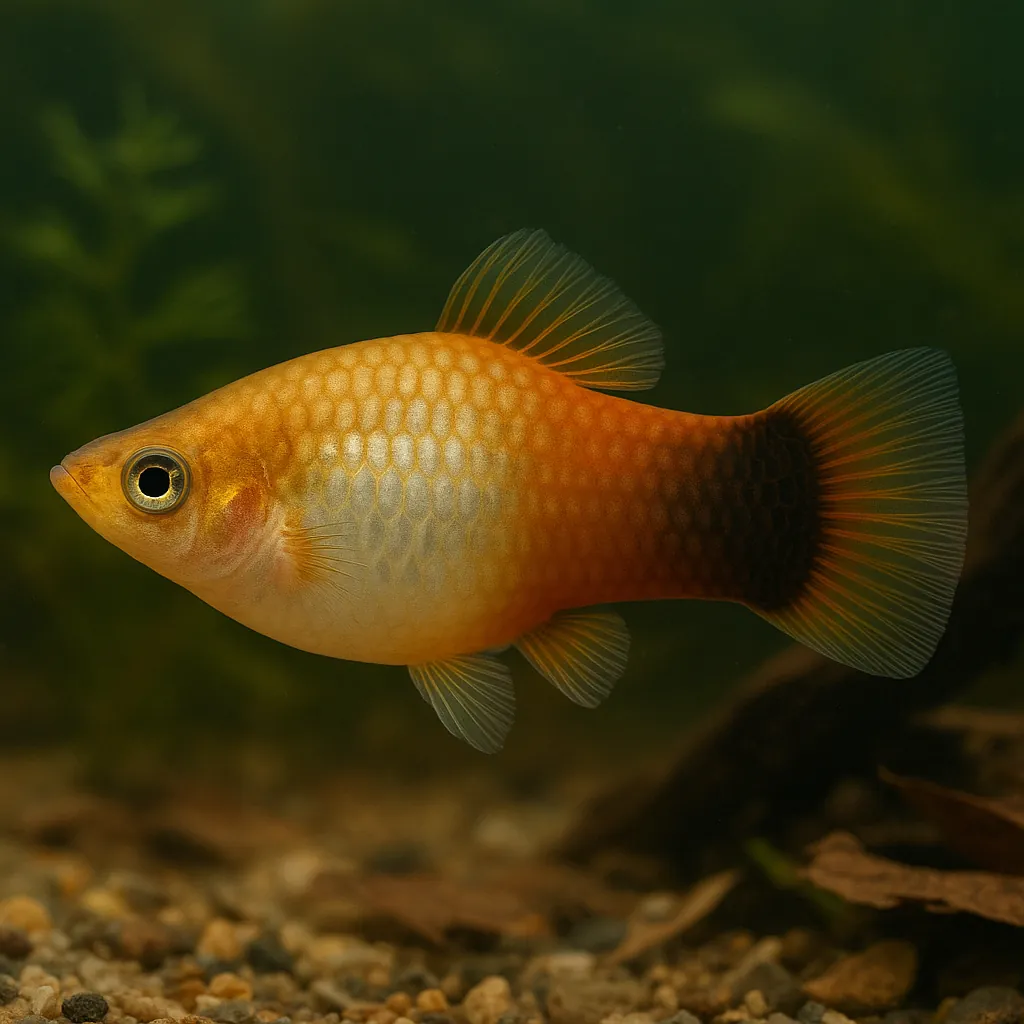
Platy fish
Introduction
The Platy fish, scientifically known as Xiphophorus maculatus, is a vibrant and hardy freshwater species native to Central America. Renowned for their wide array of colors and patterns, Platies are a favorite among aquarists of all levels. Their peaceful nature and ease of care make them an excellent choice for community tanks, especially for beginners looking to add a splash of color to their aquariums.
What makes Platy fish ideal for beginner aquarists?
Platies are hardy, adaptable, and require minimal maintenance, making them perfect for those new to fishkeeping.
Can Platy fish coexist with other species?
Yes, their peaceful temperament allows them to live harmoniously with other non-aggressive fish in a community tank.
Care and Environment
Proper care and a suitable environment are essential for the health and longevity of Platy fish. Here's a comprehensive guide to their care requirements:
What is the minimum tank size for a single Platy fish?
A minimum tank size of 40 liters is recommended to provide adequate space for swimming and to maintain stable water conditions.
What are the ideal water parameters for Platy fish?
Platies thrive in water temperatures between 22°C and 26°C, with a pH range of 7.0 to 8.0, and water hardness between 10 to 28 dGH.
How should the tank be set up for Platy fish?
Incorporate live plants like Java Fern and Anubias to provide hiding spots and enhance water quality. A fine gravel or sandy substrate is suitable, and moderate lighting for 10-12 hours daily will support plant growth and maintain a natural day-night cycle.
What is the recommended diet for Platy fish?
Platies are omnivorous and should be fed high-quality flake or pellet food as a staple, supplemented with live or frozen foods like brine shrimp and bloodworms, and occasional blanched vegetables such as spinach or zucchini.
Are there any specific challenges in keeping Platy fish?
While generally hardy, Platies can be sensitive to sudden changes in water parameters. Regular monitoring and maintenance are crucial to prevent stress and disease.
Origin and Habitat
Platy fish are native to the freshwater bodies of Central America, particularly in regions of Mexico, Guatemala, and Honduras. They inhabit a variety of environments, including creeks, springs, canals, ditches, and swamps. These habitats are typically characterized by slow-moving waters with abundant vegetation and silt substrates, providing ample hiding spots and feeding grounds.
What type of water bodies do Platy fish naturally inhabit?
Platies are found in slow-moving freshwater environments such as creeks, canals, and swamps with plenty of plant life.
How does their natural habitat influence their care in aquariums?
Replicating their natural environment with plants and stable water conditions helps reduce stress and promotes natural behaviors.
Temperament and Compatibility
Platy fish are known for their peaceful and social nature, making them excellent candidates for community aquariums. They are active swimmers and enjoy the company of their own kind, as well as other non-aggressive species.
Are Platy fish schooling fish?
While not strict schooling fish, Platies are social and thrive when kept in groups of at least three to six individuals.
What are suitable tank mates for Platy fish?
Compatible tank mates include guppies, mollies, tetras, and danios. It's best to avoid aggressive or significantly larger species that may intimidate or prey on Platies.
How can aggression be minimized in a community tank with Platy fish?
Providing ample space, hiding spots, and maintaining a balanced male-to-female ratio can help reduce potential aggression, especially during breeding periods.
Interesting Facts
Platy fish offer more than just aesthetic appeal; they have several fascinating traits that intrigue aquarists:
How do Platy fish reproduce?
Platies are livebearers, meaning females give birth to live, free-swimming fry rather than laying eggs. A single female can produce 20 to 80 fry every four to six weeks.
Can Platy fish interbreed with other species?
Yes, Platies can interbreed with closely related species like swordtails, resulting in hybrid offspring with diverse color patterns.
What is the significance of Platy fish in scientific research?
Due to their rapid reproduction and genetic diversity, Platies have been used in studies related to genetics and evolutionary biology.
Sources
All information in this article has been gathered from the following reputable sources:
Overview
Recommended Tank Size 15.9 Gallons (suitable for a small group of 3-6 Platies) |
Minimum Group Size 3 |
Minimum Tank Volume 10.6 Gallons |
Maximum Adult Length 2.4 inches |
Average Adult Length 2 inches |
Shoaling (6+ required) No |
Preferred Water Type Freshwater, slightly alkaline, moderately hard |
Temperature Range (°C) 22-26 |
pH Range 7.0-8.0 |
Water Hardness (dGH) 10-28 |
Typical Lifespan (years) 2 years |